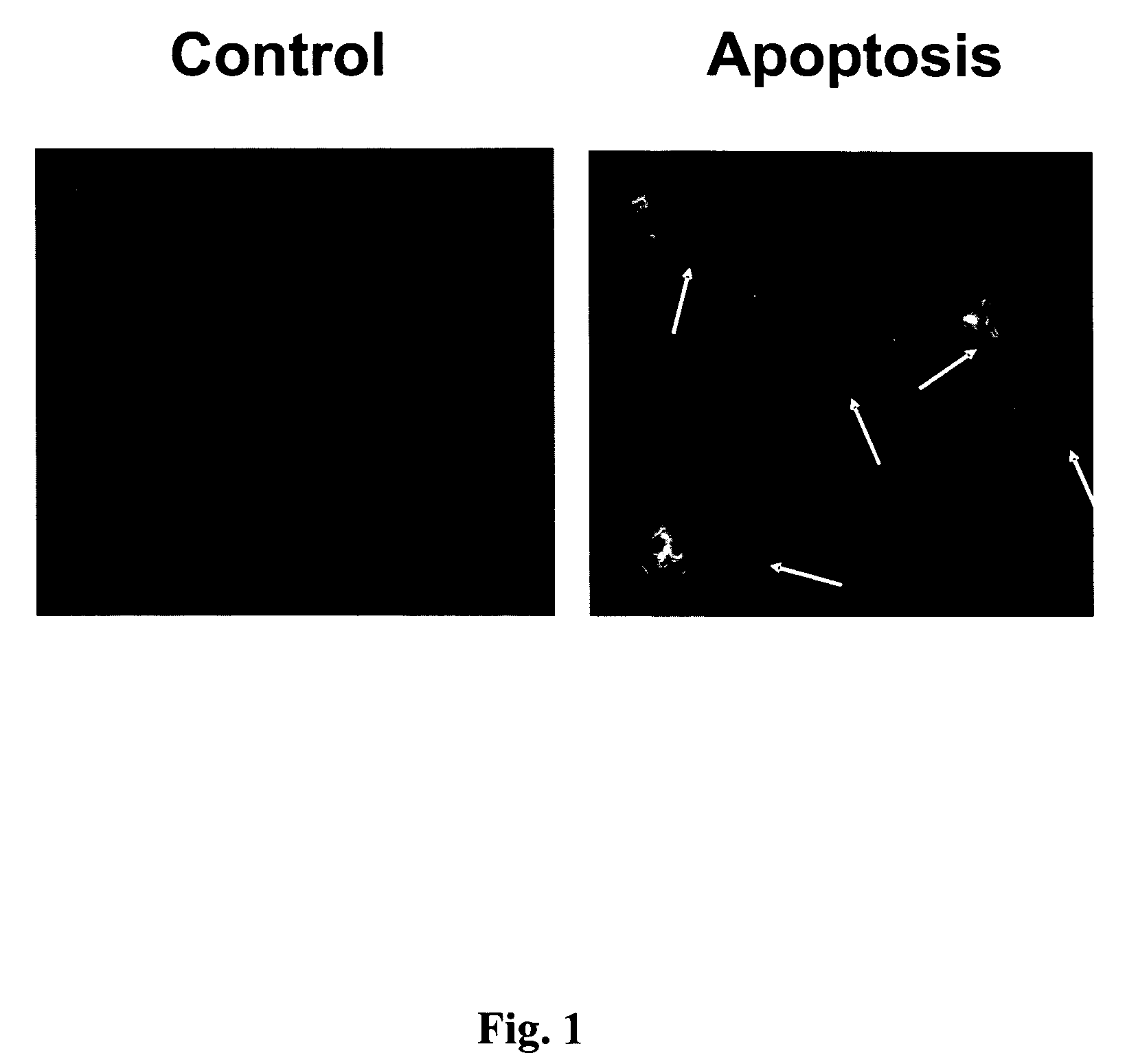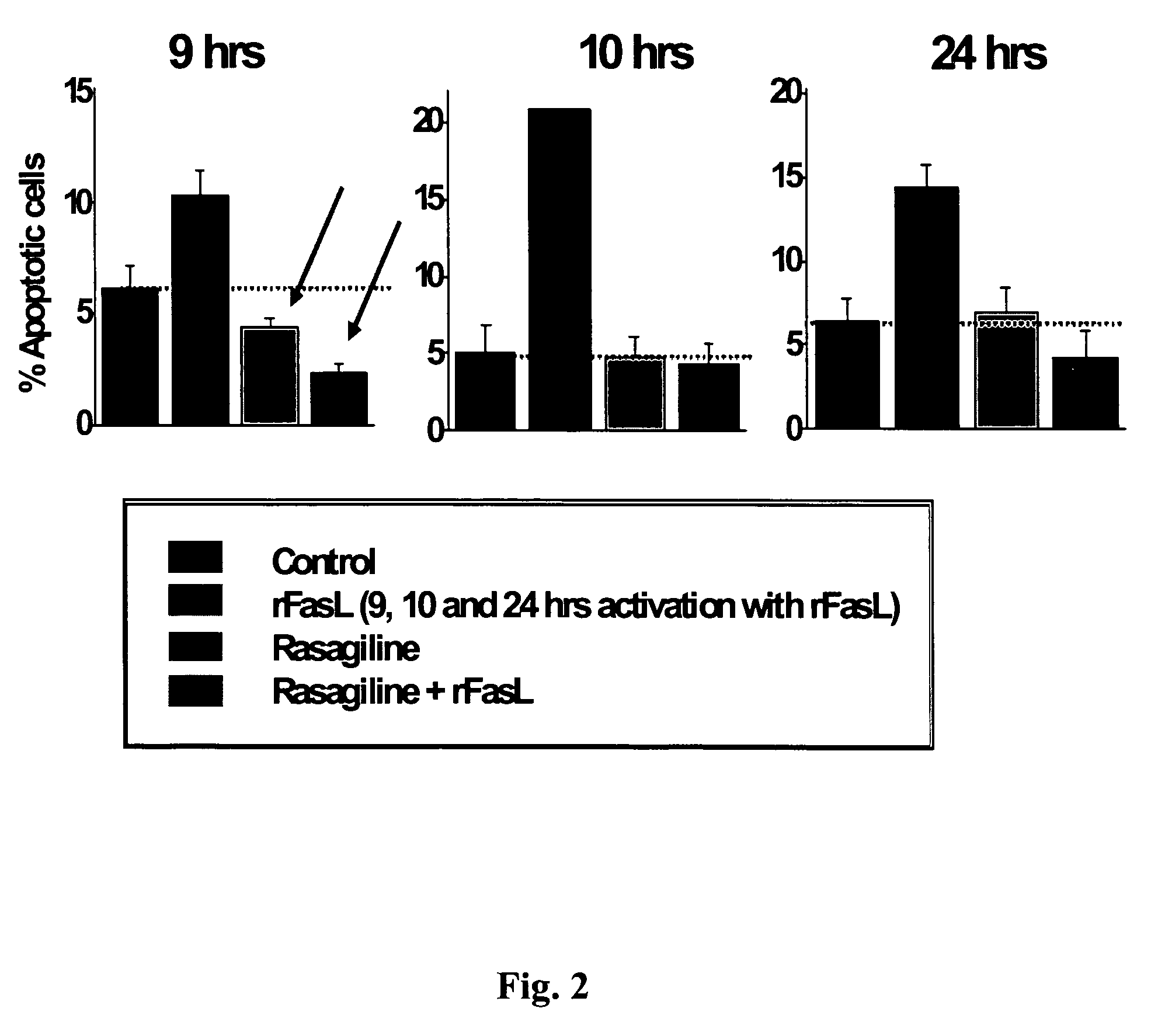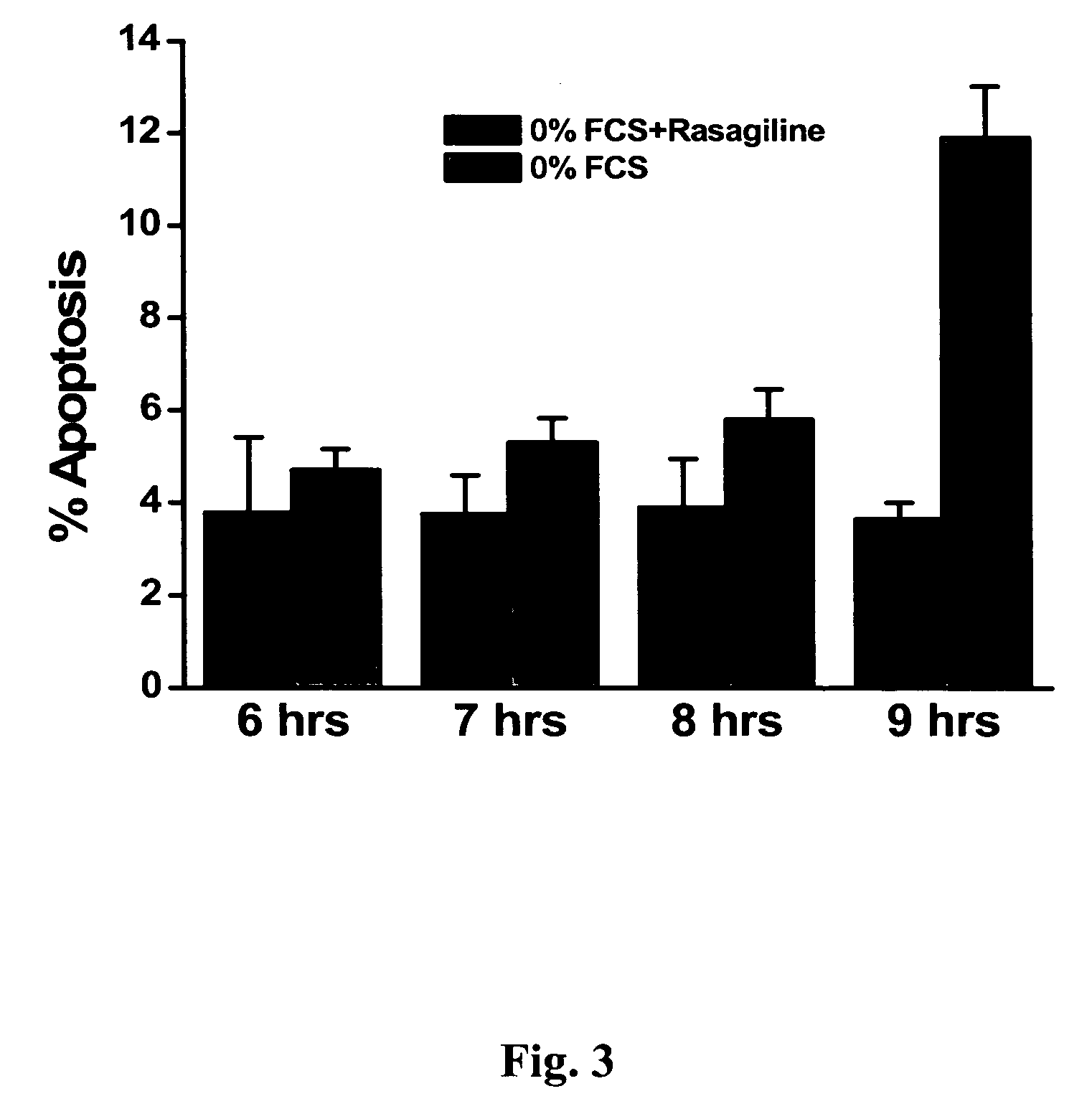Compositions and methods for treatment of cardiovascular disorders and diseases
a technology of cardiovascular disease and composition, applied in the field of composition and methods for the treatment of cardiovascular disorders and diseases, can solve the problems of inability to meet and inability to achieve the full range of increases in flow to meet the increase in myocardial demand
- Summary
- Abstract
- Description
- Claims
- Application Information
AI Technical Summary
Benefits of technology
Problems solved by technology
Method used
Image
Examples
example 1
Rasagiline Protects H9c2 Heart Cells Against Apoptosis Induced by Fas Activation
[0052] The first apoptosis-inducing protocol tested was activation of the Fas receptor with recombinant Fas Ligand (rFasL) plus the enhancing antibody (Yaniv et al., 2002).
[0053] Cultures of embryonic rat heart cell line H9c2 were incubated with rFasL (10 ng / ml) and an enhancing antibody for periods of time of 9, 10 and 24 hours, and apoptosis measured thereafter. As shown in FIG. 1, Fas activation caused prominent apoptosis in H9c2 cells, as detected by the DAPI assay.
[0054] In order to determine whether rasagiline can prevent Fas-mediated apoptosis, the Fas receptor was activated for 9, 10 and 24 hours as described above. Rasagiline (10 μM) was introduced to the culture medium 16 hours before, and was present throughout the apoptosis-inducing protocol (n=3 wells). As seen in FIG. 2, the maximal apoptotic effect (˜20% apoptosis) of Fas activation was attained at 10 hours incubation with rFasL. This ...
example 2
Rasagiline Protects Cultured Neonatal Rat Ventricular Myocytes Against Apoptosis Induced by Fas Activation
[0055] To test whether rasagiline can prevent the marked hypertrophy induced in cultured neonatal rat ventricular myocytes (for methods see: Yaniv et al, 2002), Fas was activated by 24 hours incubation with rFasL (10 ng / ml rFasL plus 1 μg / ml of the enhancer antibody). Hypertrophy was assessed by determining the mRNA levels (by means of RT-PCR) of the atrial natriuretic peptide (ANP), which is a most common molecular marker of hypertrophy. Rasagiline (10 μM / ml )was added to the culture 1 hour before Fas activation and remained in the medium throughout the 24 hours exposure to rFasL. In these preliminary experiments we have found that rasagiline prevented Fas-mediated hypertrophy, a finding which may have an important clinical significance.
example 3
Rasagiline Protects H9c2 Heart Cells Against Apoptosis Induced by Serum Starvation
[0056] The next apoptosis-inducing stimulus tested was serum starvation (24 hrs, 0% serum in the culture medium). To induce apoptosis, H9c2 cells were incubated in the culture medium containing 0% FCS for 6, 7, 8 or 9 hours. Rasagiline was introduced to the culture medium 2 hours before inducing serum starvation and was present throughout the apoptosis-inducing protocol (n=3 wells). As seen in FIG. 3, the most effective protocol was 9 hrs serum starvation, which caused 12% apoptosis. This effect was completely prevented by rasagiline (10 μM).
PUM
| Property | Measurement | Unit |
|---|---|---|
| enantiomer | aaaaa | aaaaa |
| aliphatic | aaaaa | aaaaa |
| area | aaaaa | aaaaa |
Abstract
Description
Claims
Application Information
 Login to View More
Login to View More - R&D
- Intellectual Property
- Life Sciences
- Materials
- Tech Scout
- Unparalleled Data Quality
- Higher Quality Content
- 60% Fewer Hallucinations
Browse by: Latest US Patents, China's latest patents, Technical Efficacy Thesaurus, Application Domain, Technology Topic, Popular Technical Reports.
© 2025 PatSnap. All rights reserved.Legal|Privacy policy|Modern Slavery Act Transparency Statement|Sitemap|About US| Contact US: help@patsnap.com



